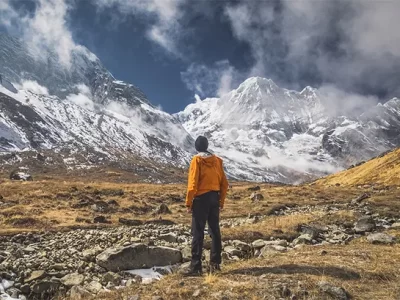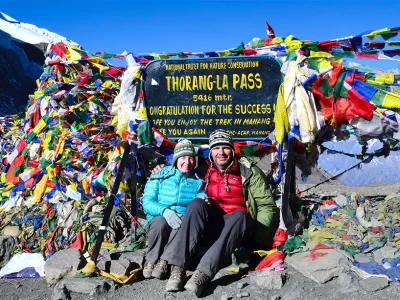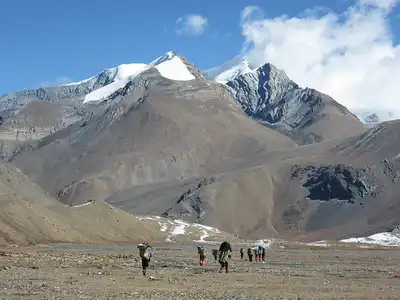The Annapurna Base Camp trek provides an iconic journey in Nepal, bringing you face-to-face with the towering peaks of the Himalayas. Celebrated for its Major Attractions of Annapurna Base Camp Trek, this route weaves through the core of the Annapurna region, displaying an array of snow-capped peaks, lush forests, and charming villages.
Starting from Nayapul, a short drive from Pokhara, the trek follows a well-marked trail. This path takes you through dense forests and the traditional dwellings of the Gurung communities. As you progress, you will encounter terraced fields, flowing waterfalls, and swaying suspension bridges, enriching your visual and cultural experience.

Perched at an altitude of 4,130 meters, Annapurna Base Camp brings you closer to Annapurna massif, the world’s tenth-highest peak. From this vantage point, the Annapurna range provides stunning views. The sunrise and sunset cast a heavenly glow across the rugged terrain, creating an enchanting spectacle.
The route to Annapurna Base Camp is more than a mere trail; it is a lively path enriched with cultural and biological diversity. Trekkers interact with the heritage and traditions of Nepal’s ethnic groups and discover the region’s varied plant and animal life.
The scenic splendor of the trek encompasses towering mountains such as Annapurna I, Annapurna III, Annapurna South, Machhapuchhre (Fishtail), Mount Dhaulagiri, and Mount Mardi. These formidable peaks stand as quiet sentinels along your journey, adding to the thrill of the adventure.
Going on the Annapurna Base Camp trek transcends a simple geographical journey. It offers a profound exploration of natural beauty and cultural richness. The base camp itself stands out as a key highlight of this trek, marking a high point among Nepal’s diverse attractions.
Annapurna Base Camp Trek
Annapurna Circuit Trek
Mini Annapurna Circuit Trek
Major Attractions of Annapurna Base Camp Trek History and Cultural Significance
Background on the Annapurna Region
Nestled in the Nepalese Himalayas’ heart, the Annapurna region boasts a rich history and stunning landscapes, drawing its name from the Hindu goddess of nourishment, Annapurna. Historically, it served as a crucial part of the trans-Himalayan trade route, enabling cultural exchanges between Tibet and the Indian subcontinent and shaping its cultural diversity with Tibetan Buddhism and Hinduism influences.
The geological marvel of the Annapurna massif, including the world’s 10th highest peak, Annapurna I, remained largely hidden from the global eye until Maurice Herzog’s French expedition uncovered it in 1950 with the first successful ascent. This discovery has since turned the region into a global trekking and mountaineering hub, celebrated for its spectacular scenery and challenging peaks.
Cultural Insights into Local Communities and Traditions
The Annapurna Base Camp trail takes trekkers through diverse ethnic communities, revealing the unique traditions, languages, and lifestyles of the Gurung and Magar people. These communities, historically skilled warriors and farmers, maintain their traditional lifestyles, showcased in their distinctive stone-roofed houses and vibrant attire.
Rich cultural practices, including music, dance, and festival celebrations like Lhosar and the Tibetan New Year, mark the calendar filled with singing, dancing, and gift exchanges. In these communities, a syncretism of Buddhist and Hindu beliefs profoundly influences daily life, as seen in the intricately carved wooden totems and prayer wheels that stand alongside Hindu shrines in many villages.
Honey hunting, the ancient and thrilling practice of collecting wild honey from cliffs, remains a legendary activity in the region, underscoring its rich cultural heritage.
Annapurna Base Camp stands as a premier attraction in Nepal, offering several notable features as follows:
1. Pokhara
As a crucial hub for treks in the Annapurna region, Pokhara stands as the primary entry point, renowned for being one of Nepal’s most popular tourist destinations. Situated in western Nepal, this city captivates visitors with its mild climate, tranquil ambiance, and stunning natural features, earning it the nickname’ city of lakes.’

The city’s landscape, adorned with lakes, caves, and waterfalls, makes it a standout attraction on the Annapurna Base Camp (ABC) trek route, offering a plethora of activities. Tourists, whether gearing up for a trek or unwinding post-trek, find Pokhara accommodating to various interests.
Activities in Pokhara range from boating on Phewa Lake to exploring the enigmatic Davis Falls, from serene moments at Begnas Lake to catching breathtaking sunrises in Sarangkot, catering to nature enthusiasts.
Cultural and spiritual explorers can delve into the essence of Hindu and Buddhist traditions at sacred sites like Tal Barahi Temple, Bindhyabasini Temple, and the World Peace Pagoda, providing a profound cultural immersion.
Adventure enthusiasts regard Pokhara as Nepal’s adventure capital, where endless thrilling activities await, including ziplining, bungee jumping, ultralight flights, hiking, paragliding, and white water rafting.
Unique to Pokhara, hot air balloon rides offer a spectacular aerial view of the city’s lakes, snow-covered peaks, and picturesque terrain, enhancing its charm as a diverse tourist destination.
As night falls, Pokhara transforms into a vibrant hub for nightlife enthusiasts, where cultural performances, pubs, and DJs reveal the city’s lively, nocturnal side.
2. Nayapul: The Gateway to the Annapurna Trek
Nayapul marks the starting point of the Annapurna trek, welcoming adventure seekers to the Nepalese Himalayas. Located about an hour’s drive from Pokhara, this small town stands as the boundary between the bustling urban life and the Annapurna region’s serene, untouched landscapes.

The natural beauty of the area greets trekkers as they embark from Nayapul. The town, nestled in a valley, offers a fresh, contrasting environment to the city’s hustle. Terraced fields, lush forests, and the winding Modi River blend harmoniously around Nayapul, providing a peaceful backdrop for the ascending journey. The geography here transitions from subtropical lowlands to dense forests, previewing the diverse ecosystems on the path to Annapurna Base Camp.
Local Lifestyle
In Nayapul, the rural life of Nepal’s hill communities, primarily the Gurung and Magar people, comes alive. These communities, with their rich cultural heritage and traditional farming practices, populate the town and its vicinity. Trekkers starting their journey here can observe these communities’ daily lives, deeply intertwined with nature’s rhythms.
Agriculture and tourism predominantly support Nayapul’s economy. Locals actively engage in farming, cultivating rice, millet, and maize on the terraced fields, reflecting a sustainable lifestyle passed through generations. The influx of trekkers and tourists has also led many locals to provide services like lodges, tea houses, and shops, fostering a mutualistic relationship with the trekking community.
Ghorepani Poon Hill Trek
Mardi Himal Trek
Dhaulagiri Trek
3. Ghorepani and Poon Hill: A Panoramic Himalayan Vista
Ghorepani and Poon Hill, key highlights on the Annapurna Base Camp trek, boast breathtaking landscapes and panoramic views of the Himalayas. These spots, nestled in the Annapurna region’s heart, reward trekkers with some of the most memorable vistas.
The Ascent to Poon Hill
Starting in Ghorepani, a picturesque village cradled among the mountains, trekkers embark on the climb to Poon Hill early in the morning to witness the day’s first light. This steep and brief journey challenges trekkers but rewards them with one of the Himalayas’ most magnificent sunrises.

Rhododendron forests, blooming vibrantly in spring, line the trail, injecting color into the journey. The path gradually reveals the surrounding peaks’ breathtaking views, culminating in the awe-inspiring sights from Poon Hill’s summit.
Panoramic Views from Poon Hill
At Poon Hill’s summit, 3,210 meters high, a 360-degree panorama awaits trekkers, showcasing the world’s highest peaks. The viewpoint reveals the Annapurna and Dhaulagiri ranges, with notable peaks like Annapurna South, Annapurna I, Dhaulagiri, Machhapuchhre, and Nilgiri dominating the skyline, offering an unobstructed view of the Himalayan expanse.
Significance of Sunrise Views over the Himalayas
The sunrise at Poon Hill, a major highlight for trekkers, encapsulates the Himalayas’ serene beauty and majesty. The ascending sun bathes the snow-capped peaks in golden light, transforming the landscape into a breathtaking play of light and shadow, providing a feast for the eyes and a moment of serene accomplishment.
Experiencing the sunrise over the Himalayas at Poon Hill allows trekkers to connect with the grandeur of nature, offering reflection and inspiration. This moment captures the essence of exploration and the natural beauty of Nepal, making it an essential experience for anyone trekking in the Annapurna region.
4. Tadapani and Chomrong: Cultural Gateways on the Annapurna Trek
Tadapani and Chomrong, pivotal stops on the Annapurna Base Camp trek, immerse trekkers in the traditional Gurung community’s life and the region’s spectacular natural beauty.
Journey Through Tadapani and Chomrong
Tadapani, shrouded in mist and providing lush vistas, acts as a peaceful haven on the trek. Renowned for its stunning sunrise views over Annapurna South and Machhapuchhre, the village’s journey features paths winding through dense rhododendron forests, especially striking in their spring bloom.

Chomrong, positioned further on the path, serves as the entry point to the Annapurna Sanctuary. The village distinguishes itself with distinct stone steps, traditional houses, and sweeping views of the Annapurna massif, making it a crucial rest and acclimatization spot for base camp trekkers.
Interaction with the Gurung Community and Their Lifestyle
Tadapani and Chomrong allow trekkers to interact with the hospitable Gurung community, which is deeply embedded in its rich cultural history. Primarily engaged in farming and herding, the Gurungs live in harmony with their environment, reflected in their traditional stone and wood dwellings adorned with intricately carved wooden windows.
A visit to these villages reveals the Gurungs’ daily life and cultural practices. Many households run guesthouses and tea shops, offering traditional Nepalese meals and sharing their cultural stories, linking them closely to the tourism sector.
Festivals and rituals significantly shape the communities’ lives, allowing trekkers to observe local dances, music, and religious practices, enhancing their understanding of the Gurungs’ spiritual and communal existence.
Navigating through Tadapani and Chomrong not only unveils the Annapurna region’s magnificent landscapes but also fosters close encounters with the Gurung community, providing trekkers with a profound experience of Nepal’s highland culture.
5. Himalaya and Deurali: Journey Through Nature’s Splendor
Himalaya and Deurali stand as pivotal waypoints on the Annapurna Base Camp trek, leading trekkers from the verdant lushness of dense forests to the stark, mesmerizing terrains of high mountains and revealing the region’s distinctive flora and fauna.
Trekking Through Diverse Landscapes
Trekkers set off from dense, life-rich forests, making their way up to the imposing, rugged landscapes of higher altitudes in the Himalayas and Deurali. The journey weaves through rhododendrons and bamboo forests, hallmarks of the Himalayan foothills, offering a stark contrast to the barren beauty awaiting near Deurali.

With the increase in altitude, the thick vegetation gives way to rocky outcrops and alpine meadows. This change marks a significant geographical and ecological transition from the lush forested areas to the austere alpine zones, where the landscape adopts a more dramatic form, and the air grows thinner.
Flora and Fauna Unique to the Region
The stretch between Himalaya and Deurali serves as a biodiversity sanctuary within the Annapurna region, accommodating species that thrive across varied elevations. Rhododendron trees infuse the lower trail sections with color splashes in spring, while bamboo thickets provide critical shelter for wildlife like the red panda and numerous bird species.
Ascending the trail exposes trekkers to high-altitude flora, such as edelweiss and other hardy alpine species, peppered across the rugged terrain. The fauna transitions to creatures suited for cold, austere conditions, including Himalayan tahrs, snow leopards, and raptors soaring above.
The trek between the Himalayas and Deurali showcases a dramatic ecological shift, letting trekkers witness nature’s resilience and splendor in the high Himalayas. This segment of the journey not only tests the trekkers’ endurance but also offers a profound encounter with the natural beauty, making it an unforgettable aspect of the Annapurna Base Camp trek.
6. Machhapuchhre Base Camp: At the Foot of the Fishtailed Mountain
Machhapuchhre Base Camp (MBC) stands as a breathtaking and crucial halt on the Annapurna Base Camp trek, allowing trekkers to experience the majesty of the iconic Machhapuchhre, or “Fish Tail” mountain. More than a mere location, this base camp embodies the region’s grandeur and significance.
The Experience of Reaching Machhapuchhre Base Camp
Achieving the milestone of reaching Machhapuchhre Base Camp instills a deep sense of accomplishment in trekkers. They climb through the Annapurna region’s varied landscapes, where the path narrows, and the drama of the scenery intensifies, leading to the MBC at approximately 3,700 meters. This route challenges trekkers with its rugged terrain, river crossings, and rhododendron forests, which eventually open up to spectacular mountain views.

Approaching the base camp, trekkers receive their first breathtaking view of Machhapuchhre’s distinct fishtail peak. It offers a sublime experience in the Himalayas’ quiet magnificence, forging a deep connection with the natural world.
The Natural Beauty and Significance of the Area
Machhapuchhre Base Camp occupies a unique spot, encircled by towering peaks like Hiunchuli, Annapurna South, and Annapurna I. It provides an intimate view of Machhapuchhre’s north face, revealing a landscape both stark and immensely beautiful.
Machhapuchhre holds a sacred place in local culture, revered for its untouched summit, which remains unclimbed due to its sanctity. This reverence enhances the area’s charisma and the spiritual atmosphere of the base camp.
Visiting Machhapuchhre Base Camp transforms trekkers, merging the excitement of high-altitude trekking with the deep beauty and cultural respect of the Himalayas. It affords them a chance to ponder the journey’s challenges and rewards, surrounded by some of the most extraordinary landscapes on earth.
7. Annapurna Base Camp: The Apex of the Journey
Adventurers reach the climax of their trek at Annapurna Base Camp (ABC), standing among the towering peaks of the Annapurna massif, embodying the high-altitude trekking essence and instilling a deep sense of awe and achievement.
The Geography and Views of the Annapurna Massif
At an elevation of about 4,130 meters, Annapurna Base Camp nestles in the Himalayas’ heart, surrounded by the majestic Annapurna I, Annapurna South, Machhapuchhre, and Hiunchuli peaks. The base camp affords 360-degree views, offering a spectacular natural amphitheater formed by towering mountains, with the interplay of light and shadow creating a dynamic visual spectacle over the snow-covered peaks.

Steep slopes and deep valleys characterize the area’s geography, enhancing the dramatic scenery and the sense of immersion in nature’s grandeur. This remote and rugged landscape, accessible solely by foot, retains its untouched beauty and conveys a powerful sense of isolation from the world beyond.
8. Natural Hot Springs at Jhinu Danda: A Soothing Conclusion
The natural hot springs at Jhinu Danda provide a soothing conclusion to the strenuous journey to Annapurna Base Camp. These springs, located on the return path from the base camp, serve as an ideal haven for trekkers to unwind and rejuvenate.
Cultural and Health-Related Significance
The hot springs at Jhinu Danda, renowned for their therapeutic properties, offer relief from aches, pains, and skin conditions, with the mineral-rich waters acting as a natural remedy cherished by locals and tourists alike.

Jhinu Danda’s hot springs have become a cultural and social focal point in the local community, embodying generations of health and wellness practices. Here, the tradition of therapeutic bathing not only offers physical relief but also facilitates a connection with local customs and the geothermal wonders of the region.
Thus, visiting Jhinu Danda’s hot springs enhances the Annapurna Base Camp trek experience, allowing trekkers to ponder their journey in a tranquil, refreshing setting while engaging with the local culture and the intrinsic health benefits of the area’s geothermal features.
9. Sustainable Tourism and Conservation Efforts
Tourists flocking to the Annapurna region impact its environment and communities significantly. While spurring economic growth, tourism necessitates sustainable practices and conservation to safeguard the natural and cultural treasures of the area.
Impact of Tourism on the Region
Economic development in the Annapurna region gains momentum from tourism, which, in turn, strains the environment. Infrastructure needs, waste management, and natural resource conservation become imperative with the rise in tourist numbers. It increases the risks of disrupting the ecosystem’s balance, impacting biodiversity, and altering the local communities’ traditional lifestyles.
Conservation Efforts and Positive Contributions by Visitors
To protect the Annapurna region’s environment and endorse sustainable tourism, conservation initiatives like the Annapurna Conservation Area Project (ACAP) are in place. They focus on biodiversity preservation, renewable energy promotion, and waste management improvement.
Visitors can make a positive impact by minimizing waste, using water responsibly, and respecting wildlife and natural habitats. Supporting local businesses and buying locally made products distribute tourism’s economic benefits across the community, promoting sustainable development.
10. Local Cuisine and Products
Nepalese local cuisine and unique products in the Annapurna region reflect its cultural diversity and agricultural heritage.
Exploration of Local Nepalese Cuisine
Annapurna’s local cuisine showcases its cultural diversity, which Tibetan and Indian culinary traditions influence. Dishes like dal bhat, momo, and thukpa offer a flavorful journey into the region’s culinary heritage, with millet, buckwheat, barley, fresh mountain herbs, and vegetables providing the authentic flavors of Annapurna.
Unique Products of the Annapurna Region
The Annapurna region, known for its distinctive products, actively produces exquisite textiles and garments through traditional weaving. Local farms also produce organic teas, honey, and medicinal herbs, celebrated for their natural purity and health benefits.
By engaging with the Annapurna region’s local cuisine and products, visitors not only enrich their trekking experience but also support the local economy and the preservation of cultural and natural resources, contributing to the area’s sustainable development and enjoying its culinary and artisanal offerings.
Conclusion
The Annapurna Base Camp trek unveils Nepal’s diverse landscapes, connecting trekkers intimately with the grandeur of nature and the Gurung and Magar communities’ cultural wealth. This journey, from Pokhara’s tranquil beauty through the Annapurna massif’s rugged grandeur to Jhinu Danda’s healing hot springs, showcases the natural world’s resilience and the vibrant life of its inhabitants. This experience deepens the connection to the environment and enriches appreciation for local cultures.
Travelers must tread these paths with respect and responsibility to positively impact the conservation of these breathtaking landscapes and their unique communities. By adopting responsible tourism practices and valuing cultural appreciation, we contribute to preserving the Annapurna region’s beauty and heritage for future generations to discover and cherish.













